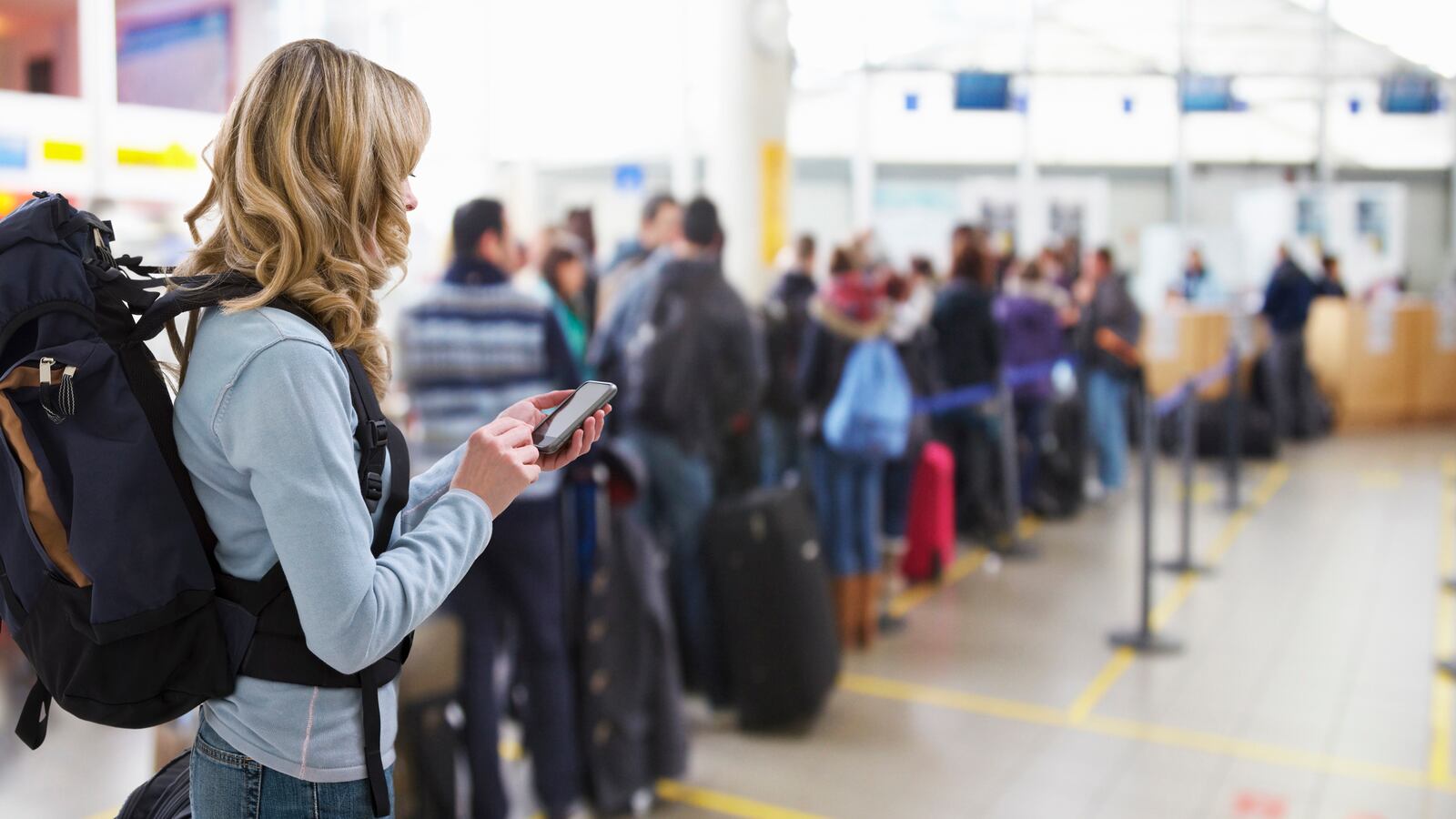In his day job, Andrew Evans does what most of us pay to do for just a week or two of vacation each year. As National Geographic Traveler’s “digital nomad,” he spent 276 days on the road last year, starting in southern Mexico to explore the Mayan calendar and ending in Scotland for New Year’s. So far, the 37-year-old Evans has been to all seven continents and more than 100 countries, travelling via train, boat, private jet, camel, horseback, and dog sled. He’s sailed across the Atlantic twice, summited Kilimanjaro, and (literally) run the length of Liechtenstein—all while keeping his 24,000 devoted Twitter followers fully abreast of his every move.

It all started three years ago, when Evans pitched an unconventional idea to National Geographic Traveler editor in chief Keith Bellows: what if he were to travel the 12,000 miles from Washington, D.C., to Antarctica bus by bus and write up the story as he went via 140-word Twitter posts? At the time, Twitter was relatively underutilized by journalists, and Evans was the first person to pitch an entirely digital story to the publication. The idea befuddled the magazine’s staff, who didn’t see tweets as story bites. But Bellows saw potential, so Evans set off on a bus that departed from the National Geographic Society’s headquarters, live-tweeting the entire way.
“I realized it wasn’t just about updates. You could actually tell travel stories in real time, and I was really fascinated by this. I thought, you know, all travel memoir and literature is in the past tense. It’s people remembering their trip, whereas suddenly I was writing the trip as it happened,” Evans says. “I didn’t just tweet. I was actually telling a story, and line by line when you put it all together it forms a long-form narrative of the trip. It was live. It was present tense.”
He ended the trip with 5,000 Twitter followers and a new title: digital nomad. The relationship with his followers quickly became an organic give-and-take. “I didn’t know what would happen, and my readers didn’t either. They’d just follow along.”
Today, armed with his iPhone for photos and video, Evans is a one-man exploration team—the antithesis of National Geographic’s traditional fully manned expeditions—who thinks that more is better when it comes to show-and-tell travel. He shares hundreds of photos a day, posts videos, and files frequent updates using Twitter, Facebook, Instagram, and his National Geographic blog. Some months he logs and chronicles as many as 40,000 miles.
For a traveler of his breadth and experience, the digital nomad’s favorite city is more on-the-beaten-path than you would expect: Paris. Some of the places he hasn’t managed to visit yet are surprising as well: Rome, Vietnam, and Greece are all on his bucket list. He dreams of riding the Trans-Siberian Railway and visiting Alaska. And he sometimes finds himself homesick for places he’s visited that have left deep impressions on him, like India, a country that couldn’t possibly grow tired for him or be predictable. “You can go sit on a street corner for an hour, go home and think about it for the rest of your life.”
Rarely spending more than two weeks at a time in his Washington, D.C., home base, Evans has racked up a wealth of travel knowledge and advice. “If you really want to soak in a place, you have to disconnect from where you were from and connect with the place you’re at,” he says. Here are his six insider tips for how to make the most out of every trip.
Tip 1: download this.
For a man glued to his iPhone, the right app can make or break a storytelling attempt. Evans gives his highest recommendations to three electronic helpers: Instagram, the miracle-making photo app, helps him keep his 2,600 followers feeling like they’re on the road with him. While in a new country, Evans relies on translation app Jibbigo to have full conversations in languages he doesn’t know. Speak into the phone, and it will spit your words back in Japanese or turn your companion’s French into English. Normally marketed to avid runners, MapMyRun helps Evans keep track of the routes he takes and jogs his memory after he returns from a trip.
Tip 2: pack this.
Evans doesn’t go anywhere without sunglasses, his iPhone, a GPS device, walking shoes, a pen and paper, and a swimsuit (he even took a dip in the icy waters of Antarctica). And, of course, an open mind.
Tip 3: embrace the layover.
Before planning your trip, Evans advises doing some research and picking an airport you know has Wi-Fi and nicer amenities. To beat the crowds, booking a ticket for a weekday afternoon is the best bet. Clocking thousands of miles a month involves a fair bit of air travel and many hours spent waiting to hear “now boarding” over the intercom. Instead of hovering around his gate during a layover, Evans explores the airport. Some airports, like in San Francisco and Seoul, even have attractions like museums and cultural centers to idle away the time.
Tip 4: get off the beaten path.
Evans has a few choice quips for spotting and avoiding the well-trodden, souvenir-shop-lined tourist routes. “The more signage, the more I stay away,” he says. “Find where the tourists are and walk the opposite direction.” There’s nothing wrong with the tried and true, but he warns that authenticity in those parts will be scarce. To combat this, Evans recommends heading in the direction of a popular spot in your guidebook, but stopping at the town before or after it instead. The same goes for countries. Instead of Costa Rica, try Panama. “I don’t think there’s anything wrong with going to places and being a tourist,” he says. “You just need to acknowledge it may not be authentic. You always have better experience connecting with locals.”
Tip 5: talk to everyone.
“I’m in everyone’s business,” Evans says. He talks to everyone he can in order to get the lay of the land from a local perspective. He calls himself a bit of a parrot when it comes to languages, which helps with making friends, especially since he doesn’t travel with a translator. He suggests trying to learn at least 10 words in the local dialect in the place you’re visiting. And even if it’s just for a short amount of time, at least be able to say “Thank you.”
Tip 6: trust the locals.
Staying safe and keeping a healthy sense of adventure can be a fine line, especially when your job is to find an original story. To keep safe, Evans makes sure to ask the locals he meets which places to avoid. Otherwise, the rules for staying out of trouble are the same as at home: be aware and don’t flaunt your valuables.





